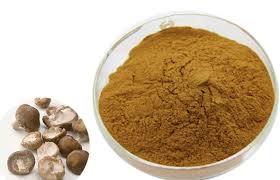预充式注射器Aranesp Syringe(Darbepoetin Alfa)
药店国别:
产地国家:美国
处方药:是
所属类别: 10微克/0.4毫升/注射器 4注射器/盒
包装规格: 10微克/0.4毫升/注射器 4注射器/盒
计价单位:盒
生产厂家中文参考译名:
生产厂家英文名:Amgen
原产地英文商品名:ARANESP 10mcg/0.4ml 4Syringe/Box
原产地英文药品名:Darbepoetin Alfa
中文参考商品译名:ARANESP 10微克/0.4毫升/注射器 4注射器/盒
中文参考药品译名:达依泊汀
曾用名:
简介:Aranesp(DarbepoetinAlfa)可以改善癌症生存的注射安进公司(Amgen)的行政官员近日宣称,初步研究显示,和该公司贫血药物Epogen成分相同的Aranesp可以提高癌症患者存活率。安进产品开发副总裁,威廉·谢里顿(WilliamSheridan)在一次生物技术产业讨论会上说,如果临床试验结果能证实Aranesp有助于提高患者存活率,那将是该药最重要的篇章。Aranesp是一种重组蛋白,可以提高红细胞氧携带能力,有一种理论认为Aranesp可以促进肿瘤氧合作用,而提高化疗对癌细胞的攻击。一个非小细胞肺癌初步研究提示,接受Aranesp的患者存活率提高。安进仍在等待FDA(美国食品和药物管理局)对Aranesp行销申请的批准,但早些时候欧洲已经批准该药用于慢性肾衰患者的贫血治疗。此次FDA申请也是慢性肾衰贫血治疗。安进称它也计划就Aranesp用于癌症贫血治疗提交申请,先前的临床试验数据显示,Aranesp能减少接受化疗的肺癌患者51%输血需求。Aranesp®(阿法达贝泊汀)注射,静脉内或皮下使用美国首次批准:2001
警告:
欧空局增加死亡,心肌梗死,中风,静脉血栓栓塞,血管通路血栓形成和肿瘤进展或复发的查看完整的黑框警告完整的处方信息的风险。慢性肾脏病:在对照试验中,患者出现死亡,严重不良反应心血管疾病和中风的风险更大时,给予红细胞生成刺激剂(ESAs的)目标的大于11克/分升血红蛋白水平。没有试验已经确定了血红蛋白目标水平,Aranesp的剂量,给药策略,不增加这些风险。使用最低的Aranesp剂量足以减少对红血细胞(RBC)的输血。巨蟹座:ESAs的缩短总体存活和/或增加患者的乳房,非小细胞肺癌,头颈癌,淋巴,和子宫颈癌临床研究肿瘤进展或复发的危险。处方医师和医院必须参加,并符合欧空局通报肿瘤项目规定和/或免除Aranesp的癌症患者。使用最低剂量,避免红细胞输血。使用欧空局只从骨髓抑制性化疗贫血。欧空局都没有表示接受骨髓抑制性化疗的患者,当预期的结果是治愈。中止完成化疗过程之后。目前的主要变化用法与用量:在癌症化疗患者适应症和用法Aranesp的是红血球生成刺激剂(ESA)的指示为贫血症是由于治疗:•慢性肾脏病(CKD)患者在透析患者和非透析。•伴随骨髓抑制性化疗的效果,并且开始时,有一个最小的计划化疗的两个附加月。使用限制Aranesp的还没有被证明可以改善生活,疲劳,或患者福祉的质量。Aranesp的未标明使用说明:•在癌症患者接受激素剂,生物制品,或放射治疗,除非也同时接受骨髓抑制性化疗。•在癌症患者接受骨髓抑制性化疗时的预期结果是固化。•作为红细胞输注在谁需要贫血立即纠正患者的替代品。
【用法用量】
推荐起始剂量为慢性肾病透析患者:0.45微克/千克静脉注射或皮下注射每周,或0.75微克/公斤静脉内或皮下,每2周静脉内途径被推荐用于血液透析病人推荐起始剂量与CKD患者不透析0.45微克/千克静脉注射或皮下注射,4周的间隔推荐起始剂量为癌症化疗患者:2.25微克/kg皮下注射每周或500微克皮下注射,每3周剂型和规格单剂量小瓶:25,40,60,100,200,300,和500微克/ 1毫升,和150微克/0.75毫升单剂量预充式注射器:10微克/ 0.4毫升,25微克/毫升0.42,40微克/ 0.4mL的,60微克/毫升0.3,100微克/0.5mL的,150微克/毫升0.3,200微克/ 0.4mL的,300微克/ 0.6毫升和500微克/1毫升禁忌未控制的高血压纯红细胞再生障碍(PRCA)开头的Aranesp或其他促红细胞生成素蛋白的药物治疗后严重过敏反应的Aranesp
警告和注意事项
增加的死亡率,心肌梗塞,中风和血栓栓塞:使用的Aranesp目标的大于11克血红蛋白水平/dL的增加的严重有害的心血管反应的风险,并没有被示出,以提供额外的好处。患者的共存心血管疾病和中风谨慎使用。死亡率增加和/或增加肿瘤进展或复发的风险癌症患者。
高血压:之前开始和治疗期间与Aranesp的控制高血压。
癫痫发作:Aranesp的增加癫痫发作的慢性肾病患者的风险。加大监测这些病人的变化发作频率或前驱症状。
PRCA:如果在治疗Aranesp的严重贫血和低网织红细胞计数发展,扣压Aranesp和评估PRCA。
不良反应
慢性肾脏病患者:在Aranesp的治疗的患者在临床研究中≥10%的不良反应是高血压,呼吸困难,血管神经性水肿,咳嗽,和程序低血压。癌症患者在接受化疗:不良反应中的Aranesp治疗的患者在临床研究中的≥1%为腹痛,水肿,血栓性血管事件。特殊人群中使用妊娠:根据动物实验数据,可能会对胎儿造成伤害。妊娠监察计划可用。哺乳母亲:请务必小心时的Aranesp被给予哺乳妇女。儿童用药:安全性和有效性尚未建立贫血CKD患者的初步治疗,从另一个促红细胞生成素的慢性肾脏病患者谁是不到1岁,或小儿癌症患者的过渡。
预充式注射器英文版说明书
ARZERRA(ofatumumab) Injection, for intravenous infusionARZERRA (ofatumumab) is indicated for the treatment of patients with chronic lymphocytic leukemia (CLL) refractory to fludarabine and alemtuzumab. The effectiveness of ARZERRA is based on the demonstration of durable objective responses. No data demonstrate an improvement in disease-related symptoms or increased survival with ARZERRA.Important Safety InformationHighlights of Warnings and PrecautionsInfusion Reactions: Premedicate with an intravenous corticosteroid(as appropriate), an oral analgesic, and an oral or intravenous antihistamine. Monitor patients closely during infusions. Interrupt infusion if infusion reactions occur.Cytopenias: Monitor blood counts at regular intervals for neutropenia and thrombocytopenia.Progressive Multifocal Leukoencephalopathy (PML): Monitor neurologic function and discontinue ARZERRA if PML is suspected.Hepatitis B Infection and Reactivation: Screen high-risk patients.Discontinue ARZERRA in patients who develop viral hepatitis or reactivation of viral hepatitis.Infusion ReactionsARZERRA can cause serious infusion reactions manifesting as bronchospasm, dyspnea, laryngeal edema, pulmonary edema, flushing, hypertension, hypotension, syncope, cardiac ischemia/infarction, back pain, abdominal pain, pyrexia, rash, urticaria, and angioedema.Infusion reactions occur more frequently with the first 2 infusions.Premedicate with acetaminophen, an antihistamine, and a corticosteroid. Interrupt infusion for infusion reactions of any severity. Institute medical management for severe infusion reactions including angina, or other signs and symptoms of myocardial ischemia. In a study of patients with moderate to severe chronic obstructive pulmonary disease, an indication for which ARZERRA is not approved, 2 of 5 patients developed Grade 3 bronchospasm during infusion. Infusion reactions occurred in 44% of patients on the day of the first infusion (300 mg), 29% on the day of the second infusion (2,000 mg), and less frequently during subsequentinfusions.CytopeniasProlonged (>1 week) severe neutropenia and thrombocytopenia can occur with ARZERRA. Monitor complete blood counts (CBC) and platelet counts at regular intervals during therapy, and increase the frequency of monitoring in patients who develop Grade 3 or 4 cytopenias. Of 108 patients with normal neutrophil counts at baseline, 45 (42%) developed >Grade 3 neutropenia. Nineteen (18%) developed Grade 4 neutropenia. Some patients experienced new onset Grade 4 neutropenia >2 weeks in duration.Progressive Multifocal LeukoencephalopathyProgressive multifocal leukoencephalopathy (PML), including fatal PML, can occur with ARZERRA.Consider PML in any patient with new onset of or changes in pre-existing neurological signs or symptoms.Discontinue ARZERRA if PML is suspected and initiate eva luation for PML including consultation with a neurologist, brain MRI, and lumbar puncture.Hepatitis B Infection and ReactivationFulminant and fatal hepatitis B virus (HBV) infection and reactivation can occur in patients following treatment with ARZERRA.Screen patients at high risk of HBV infection before initiation of ARZERRA.Closely monitor carriers of hepatitis B for clinical and laboratory signs of active HBV infection during treatment with ARZERRA and for 6 to 12 months following the last infusion of ARZERRA.Discontinue ARZERRA in patients who develop viral hepatitis or reactivation of viral hepatitis, and institute appropriate treatment.Insufficient data exist regarding the safety of administration of ARZERRA in patients with active hepatitis.Intestinal ObstructionObstruction of the small intestine can occur in patients receiving ARZERRA. Perform a diagnostic eva luation if obstruction issuspected.ImmunizationsThe safety of immunization with live viral vaccines during or following administration of ARZERRA has not been studied.Do not administer live viral vaccines to patients who have recently received ARZERRA. The ability to generate an immune response to any vaccine following administration of ARZERRA has not been studied.Most Common Adverse ReactionsIn the pivotal study (total population, n=154) the most common adverse reactions (>10%, all grades) were neutropenia, followed by pneumonia (23%), pyrexia (20%), cough (19%), diarrhea (18%), anemia (16%), fatigue (15%), dyspnea (14%), rash (14%), nausea (11%), bronchitis (11%), and upper respiratory tract infections (11%).Most Common Serious Adverse ReactionsIn the pivotal study (total population, n=154), where ARZERRA was administered at 2,000 mg beginning with the second dose for 11 doses, the most common serious adverse reactions were infections(including pneumonia and sepsis), neutropenia, and pyrexia.A total of 108 patients (70%) experienced bacterial, viral, or fungal infections. A total of 45 patients (29%) experienced >Grade 3 infections, of which 19 (12%) were fatal.The proportion of fatal infections in the fludarabine- and alemtuzumab-refractory group was 17%.
用药温馨提示:当您服用此药物时,需定期接受医疗专业人士的检查,以便随时针对其药效、副作用等情况进行监测。本网站所包含的信息旨在为患者提供帮助,不能代替医学建议和治疗。
药品价格查询,专业药品查询网站,药品说明书查询,药品比价 » 预充式注射器Aranesp Syringe(Darbepoetin Alfa)
药品价格查询,专业药品查询网站,药品说明书查询,药品比价 » 预充式注射器Aranesp Syringe(Darbepoetin Alfa)





